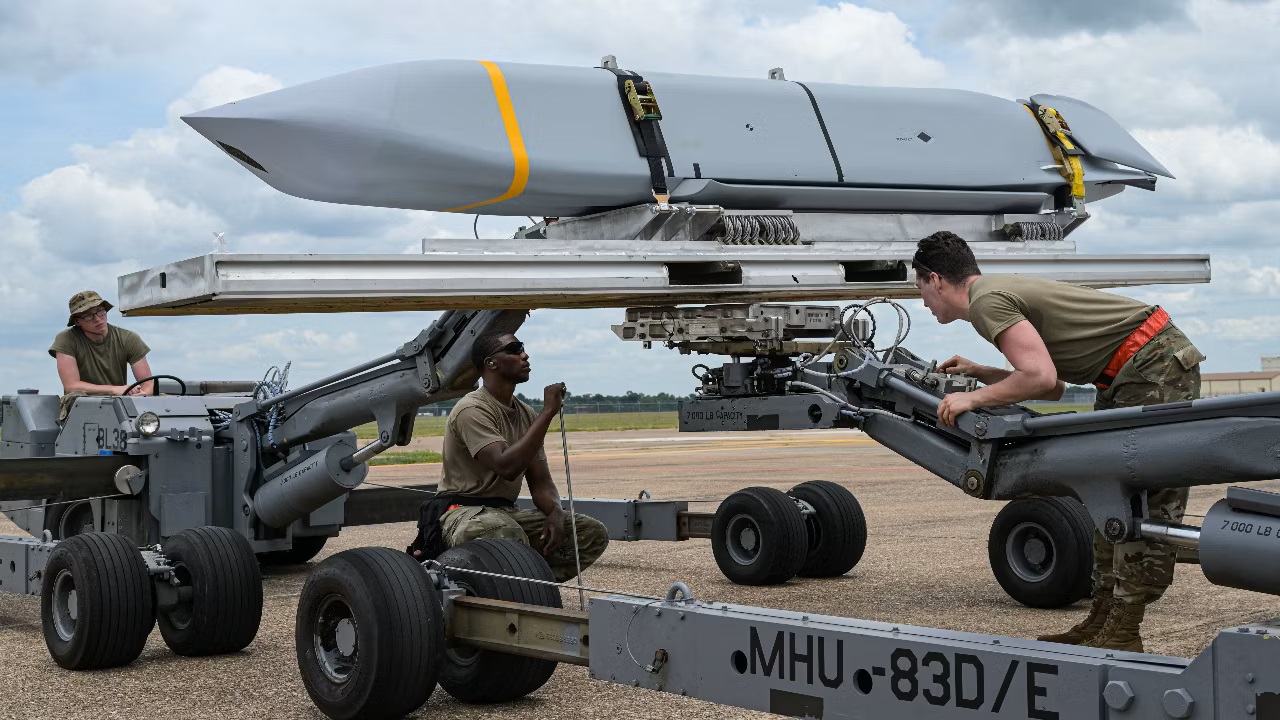
The Pentagon has awarded Lockheed Martin Missiles and Fire Control division a 3.23 billion USD contract for the Lot 22 of AGM-158 Joint Air-to-Surface Stand-off Missile (JASSM) missile production, including 751.69 million in funding for Foreign Military Sales coming from Japan, the Netherlands, Finland and Poland.
Japan signed in July to go ahead with a purchase, authorized in 2023, for up to 50 extended-range AGM-158B/B-2 JASSM - Extended Range (ER), initially for its F-15J fleet “but not limited to it”. With the coming of the F-35, that makes 2 compatible fleets. The Netherlands obtained US authorization back in February for up to 120 AGM-158B/B-2 ER.
Finland first acquired the original AGM-158A JASSM for use with its F/A-18C and D HORNET fighter jets, receiving an authorization for 70 missiles all the way back in 2011. More recently, in 2020, it was cleared to acquire up to 200 AGM-158B-2 (ER) missiles as part of the package for 64 F-35A jets.
Poland has also used JASSM for several years. The most recent authorization, obtained in March 2024, covers up to 821 AGM-158B-2 ER. It had already requested 70 back in 2016 for its F-16 fleet. Earlier still, in 2014, it had been authorized for 40 of the original AGM-158A.
The AGM-158B-2 replaced obsolete components from the earlier A and B variants and introduced a new electronic fuse, a new Global Positioning System (GPS) receiver, an upgraded Missile Control Unit (MCU), and enhanced software. AGM-158B-2 began a gradual production cut-in starting in Lot 19/FY21 funding year.
The AGM-158B-3 is in final development phases and should see production start within this exact production lot, the 22nd, supported by FY 2024 funding. It provides M-code capability enhancing the GPS resistance to jamming.
The AGM-158D is also in late phases of development: it adds a Weapon Data Link (WDL) capability to re-target the missile, post-launch, against relocatable or higher priority targets during mission execution. AGM-158D was originally planned for a Lot 20/FY22 cut-in but has slipped 2 years to Lot 22/FY24 funding year. According to Fiscal Year 2025 Budget request documentation, the USAF is to order 550 missiles in Lot 22, of which 330 are B2s,120 are to be B3s and 100 are to be of the new D standard. Work covered by this contract will last until July 31, 2032.
Separately, the contract for Lot 8b of AGM-158C, Long Range Anti-Ship Missiles (LRASM) production has received a modification worth 358.44 million USD that brings the overall value of the lot to just shy of 1.15 billion USD. This latest expansion to the production order includes 123.3 million USD in funding coming from Australia, at the moment the only foreign customer authorized for LRASM, and funding from the USAF.
According to FY2025 documentation, the US Navy under FY2024 funding, is to receive 81 LRASM C1 and 10 at the new C3 standard, beginning production of this evolved variant which leverages the JASSM ER advancements and range. The USAF is expected to get 27 C1, ahead of moving to a C3-only procurement from FY 2026. Australia received the US authorization for up to 200 AGM-158C plus 11 inert ATM-158C LRASM Telemetry Variant and captive training missiles in February 2020.
The USMC has, back in August, cleared its F/A-18 HORNET fleet for employing the JASSM 158A, which is no longer produced but can be sourced via USAF stocks. While the LRASM is a joint program between US Navy and USAF, the JASSM is a USAF program, although in the Fiscal Year 2022 budget provision was made for the Navy to acquire a first lot of 25 JASSM ER. At the time, it was said the weapon would initially deploy on the F/A-18E/F and later be integrated on F-35C and future Navy strike fighter aircraft, but the current status of this is unclear, with JASSM not figuring in USN Budget documents.
By FY 2022 (included), the USAF had received or ordered a total of 4,970 JASSM, all variants. 600 were ordered in FY2023, and 550 in 2024 with an equal amount planned for 2025.








.png)
